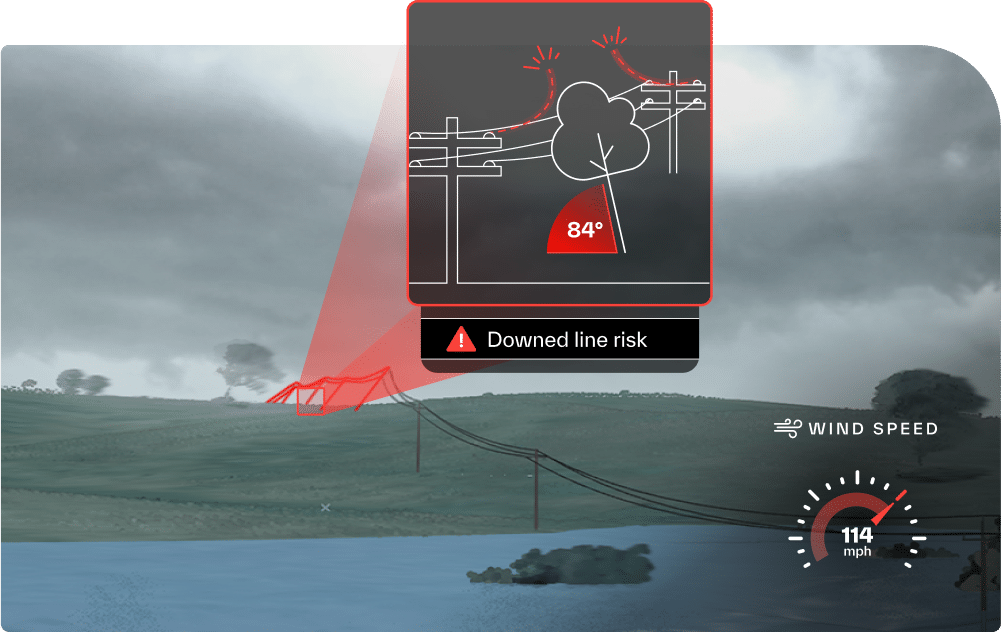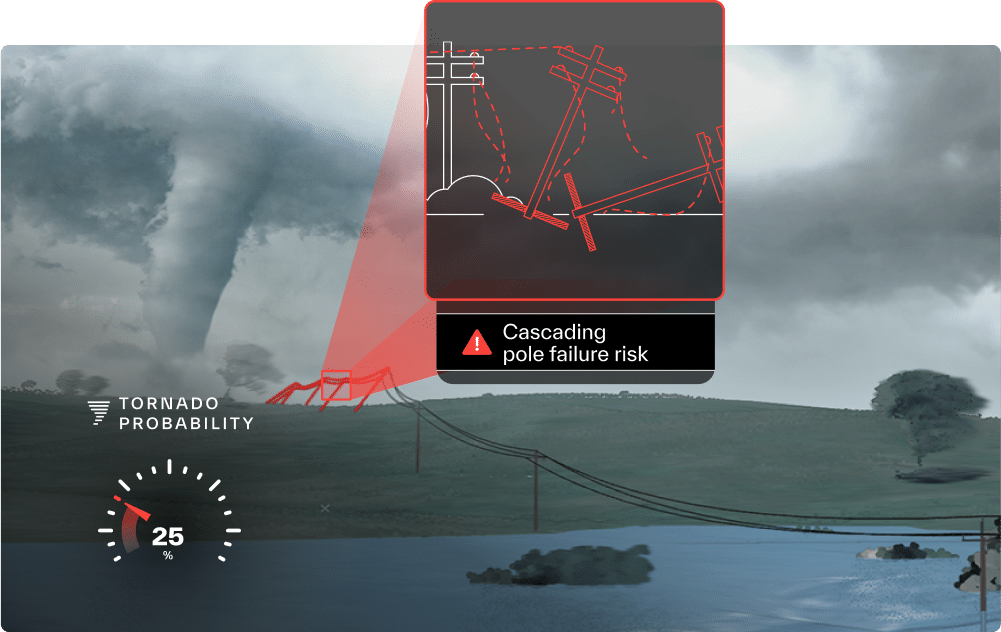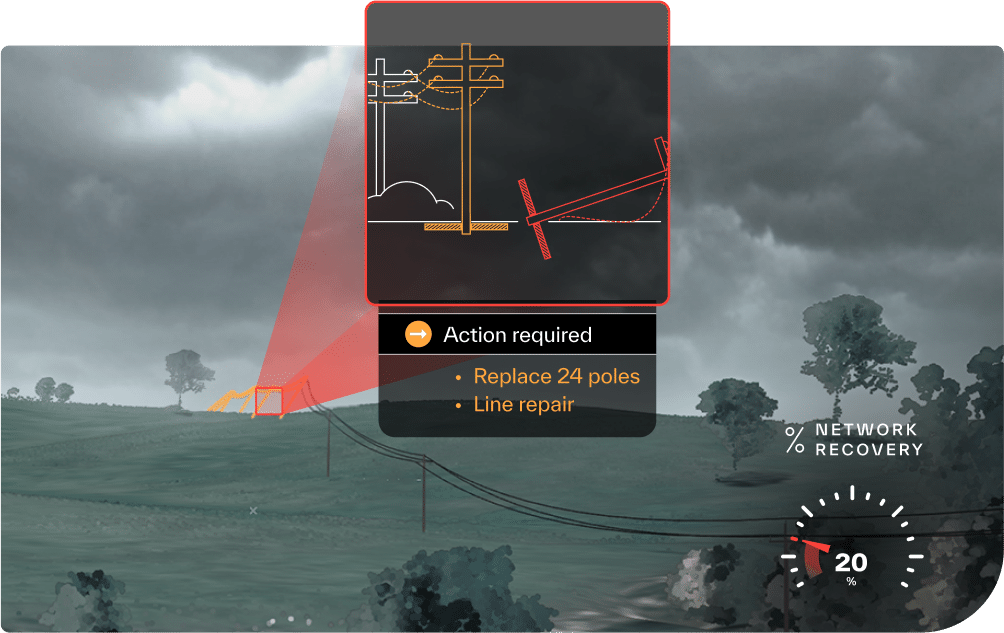Hurricane & Storm Management
Safeguard your network from hurricane danger and destruction
Hurricanes may be a fact of life, but the extent of danger and damage they can cause doesn’t have to be. From the forecast to the aftermath, your network model acts as your full-cycle safety roadmap from preparation to restoration. Minimize hurricane impact with proactive risk detection, scenario simulation, and post-storm intelligence to chart a course for a safe return to normal operations.

Predict which parts of your network will be hardest hit by simulating hurricane conditions in your digital network model. Predict which assets will likely need repairs and total replacement so you can budget effectively and prioritize grid hardening initiatives to maximize network-wide benefits. Anticipate and pre-order components that will likely require replacement post-hurricane to minimize downtime.

Your digital network model is the system of record that allows field control teams and emergency responders to maintain critical situational awareness. Using the model, they’ll understand exactly how the storm is impacting your network by overlaying live feeds of weather and outage data. Keep everyone on the same page and understand which assets are compromised and at risk so you can strategize a smooth restoration plan as quickly as possible.

Lean on your digital network model to help inform where to restore power first for the maximum number of customers safely. Generate a comprehensive summary of which assets have been damaged so you can prioritize repairs and budget effectively. Minimize your team’s exposure to dangerous field conditions by making field visits as efficient and infrequent as possible and ensuring teams know precisely what needs to happen on-site.

Learn how to find out, fast.